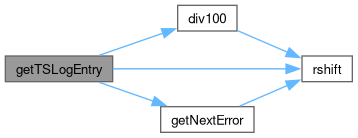 |
Speeduino
|
 |
Speeduino
|
File for generating log files and meta data. More...
#include "globals.h"
Go to the source code of this file.
Macros | |
| #define | LOG_ENTRY_SIZE 138 |
Functions | |
| byte | getTSLogEntry (uint16_t byteNum) |
| int16_t | getReadableLogEntry (uint16_t logIndex) |
| uint8_t | getLegacySecondarySerialLogEntry (uint16_t byteNum) |
| bool | is2ByteEntry (uint8_t key) |
| void | startToothLogger (void) |
| void | stopToothLogger (void) |
| void | startCompositeLogger (void) |
| void | stopCompositeLogger (void) |
| void | startCompositeLoggerTertiary (void) |
| void | stopCompositeLoggerTertiary (void) |
| void | startCompositeLoggerCams (void) |
| void | stopCompositeLoggerCams (void) |
| byte | buildEngineStatus (const statuses ¤t) |
| Build the TunerStudio engine status byte from the current status. | |
| byte | buildSdCardStatus (const statuses ¤t) |
| Build the TunerStudio SD card status byte from the current status. | |
File for generating log files and meta data.
This file contains functions for creating a log file for use with by TunerStudio directly or to be written to an SD card
| #define LOG_ENTRY_SIZE 138 |
The size of the live data packet. This MUST match ochBlockSize setting in the ini file
Build the TunerStudio engine status byte from the current status.


Build the TunerStudio SD card status byte from the current status.


An expansion to the getReadableLogEntry function for systems that have an FPU. It will provide a floating point value for any parameter that this is appropriate for, otherwise will return the result of getReadableLogEntry. See logger.h for the field names and order
| logIndex | - The log index required. Note that this is NOT the byte number, but the index in the log |


Similar to the getTSLogEntry function, however this returns a full, unadjusted (ie human readable) log entry value. See logger.h for the field names and order
| logIndex | - The log index required. Note that this is NOT the byte number, but the index in the log |

Returns a numbered byte-field (partial field in case of multi-byte fields) from "current status" structure in the format expected by TunerStudio Notes on fields:
| byteNum | - byte-Field number. This is not the entry number (As some entries have multiple byets), but the byte number that is needed |


Searches the log 2 byte array to determine whether a given index is a regular single byte or a 2 byte field Uses a boundless binary search for improved performance, but requires the fsIntIndex to remain in order
| key | - Index in the log array to check |















